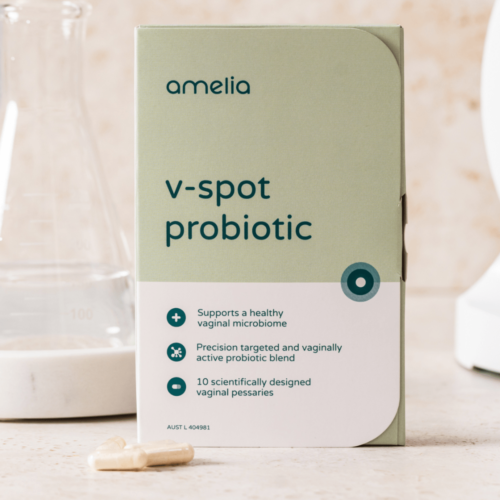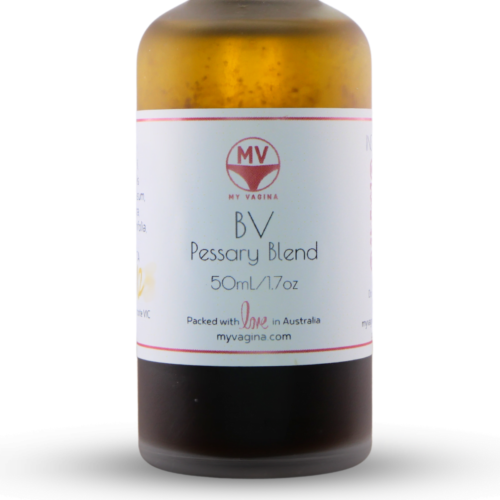Folic acid is the synthetic form of folate and is used in fortified foods and some supplements. But, it’s no good for a body and has no natural place, biologically speaking.
But we do need folate (B9) – it’s a pretty important nutrient. Here’s where you will learn about the different forms of folate, and how to navigate a life without folic acid.
- Folic acid is a manmade, synthetic vitamin that does not exist in nature
- Folate is found in folate-rich foods
- Activated folate is found in supplements and your cells
We can uptake up to 200mcg of folic acid in our gut receptors per day, but often we are taking in more than this in ‘fortified’ foods like bread, flour, cereals and so on.
Check your labels – if it says folic acid or even just folate, without specifying the type, avoid it. It’s all folic acid. We’ll discuss soon why folic acid isn’t very good, but first, why is food fortified with folic acid in the first place?
How we ended up with folic acid in processed foods
In North America, Costa Rica, Chile, South Africa, Australia, and other countries, fortifying cereals and grains (flour, bread, breakfast cereals, drinks) with folic acid was a mandated intervention1,2 like fluoride in water and iodine in salt to try to stop neural tube defects in babies, caused by low folate in the mother.
Which it largely did – but it can also have some very serious implications for those with genetic variations/mutations like MTHFR (nearly half the population) and anyone with a folic-acid-heavy diet.
There is also mounting evidence that the excess unmetabolised folic acid – due to it not having any biological home in the body if it’s not converted to active folate – may cause trouble for some people.
One of the things you’ll find once you start looking is that even many researchers have absolutely no idea what form of folate they are talking about, and the terms folic acid and folate are used interchangeably.
Why folic acid is used in processed foods – and not folate
Folic acid is synthetic because other forms of folate are not stable and can’t be used in processed foods. Some natural foods contain folate that is useful for us, like leafy greens, but if folic acid is blocking the receptor, it can’t be absorbed no matter how much spinach you eat.
Folic acid needs to be converted to its active form – requiring B12 – so it can be used by the body. Folic acid can leave you more deficient in folate than ever.
Folic acid, MTHFR and activated folate
Many older-generation prenatal supplements contain folic acid, which can be a problem if this folic acid is over 200mcg or if you’re eating folic acid-fortified foods as well. But, if you’re trying to conceive or are currently pregnant, you need folate for DNA replication for conception as well as growing a baby. It’s essential.
If you have MTHFR genetic mutations, your body isn’t very efficient at converting folic acid to activated forms of folate. Better forms of folate come in ‘activated’ or ‘methylated’ supplements, but these can be tricky – not everyone is ready for activated B vitamins and they might make you feel unwell.
It’s useful to try a good prenatal supplement with active forms of folate, but if they make you feel bad, it means you’ve got bigger issues that you may need some specialised practitioner support with.
Seek out an experienced practitioner who can work with you to support your other pathways before you can tolerate activated forms of folate.
Types of folate3
- L-Methylfolate (methylated folate, like L-5-MTHF, also known as methylfolate)
- L-5-Methyltetrahydrofolate (L-5-MTHF) (does not require DHFR conversion to active folate, best form of L-methylfolate found in supplements, well absorbed and used by the body, also known as 5-Methyltetrahydrofolate (5-MTHF))
- Tetrahydrofolate and Dihydrofolate (natural folates found in fresh foods, used for DNA and RNA synthesis, easily converted into the active form of L-methylfolate, but must be converted prior to absorption in the intestine)
- Folinic acid (calcium folinate, does not require DHFR conversion to active folate, natural, reduced form of folate, an alternative to L-methylfolate in cases of sensitivity to methylated supplements, don’t confuse with folic acid!)
- Folic acid (pteroylglutamic acid, oxidised folate, synthetic and not identical to any folate used by the body, used in fortified foods and some dietary supplements, no biological activity unless converted to other forms of folate)
What happens to folic acid in your body
Folic acid requires conversion to other forms of folate before it can be used by the body. The most basic conversion is to tetrahydrofolate (THF), via the dihydrofolate reductase (DHFR) enzyme.
Further enzymatic steps include the conversion to 5-methyltetrahydrofolate (5-MTHF), the most common form of folate in the blood, using the MTHFR enzyme.
5-MTHF is biologically active (‘active folate’), used for methylation – an important process vital for cognition, sleep, breastfeeding, pregnancy, fertility, foetal development, mood, and much more4.
Converting folic acid into usable forms of folate requires over seven enzymes (run by genes), specific nutrient co-factors, and the absence of excessive loads of heavy metals, reactive oxygen species, toxins, bacterial infections, and other factors.
In people with genetic mutations in DHFR, SLC, MTHFD1 or MTHFR genes, enzymes can be a little slower than optimal, making it more difficult for the body to convert as much folic acid into folate as it needs.
When folic acid isn’t converted into folate (unmetabolised folic acid), it roams around the bloodstream where it doesn’t belong and doesn’t fit, potentially causing problems3.
Measuring folate in a blood test
Serum folate blood tests look for the entire folate pool in the body, including unmetabolised folic acid, folinic acid, 5-MTHF, dihydrofolate and tetrahydrofolate.
Thus, serum folate testing is only so useful. If you’re eating lots of fortified foods and taking supplements containing folic acid, this can elevate your numbers, making your folate levels look within optimal range when, in actuality, it’s a little red herring.
Remember, folic acid has no biological use and has no home in our bodies until it is converted to another form of folate using DHFR enzymes. Structurally, it is different to the other forms of folate, and as a result, taking folic acid may not replenish folate levels5.
In fact, even without a folate-related genetic mutation, the presence of folic acid can still slow down the folate pathway by blocking gut folate receptors and impeding folate transport3,6–8.
When My Vagina practitioners request folate blood tests, they’re most likely to request RBC folate or red cell folate. The difference in folate tests is that serum folate levels measure folic acid intake in the short-term, so what you ate recently, while RBC folate measures levels over a longer period of time.
Red cell folate increases only with higher additional doses of folic acid supplementation, and intake over time, even in those with MTHFR genetic mutations9.
Folic acid easily binds to folate receptors, which is a problem, as it then blocks the passageway of better forms of folate absorption from food. Unfortunately, the enthusiastic binding to and uptake of folic acid by gut receptors versus its use to us is not equivalent3,7,8.
When folic acid blocks the receptors, leaving you normal or even high on a serum folate test but, in reality, deficient in folate, this is known as a functional folate deficiency.
Negative impacts of folic acid consumption
- Elevated serum folate blood test results, which can give a false impression of folate status, masking a functional folate deficiency7
- Functional folate deficiency
- Slows MTHFR enzyme function4,9
- Slowed DHFR enzyme function, causing biopterin deficiency4,5
- May hide a B12 deficiency by skipping a step in nucleic acid production and allowing cell division to occur without enough methyl groups3,10,11
- Elevated blood concentrations of naturally occurring folate and unmetabolised folic acid3
- Elevated unmetabolised folic acid may reduce natural killer cell cytotoxicity3
- Reduction in response to antifolate malaria drugs, rheumatoid arthritis, psoriasis and cancer3
- In the elderly, high folate levels and low B12 status may be associated with an increased risk of cognitive impairment and anaemia3,12
- In pregnancy, an increased risk of insulin resistance and obesity in offspring3
- Protects against cancer initiation but facilitates progression and growth of preneoplastic cells and subclinical cancers3
- May cause neurological injury in people with undiagnosed pernicious anaemia13
- Seizure control may be affected in drug-treated epilepsy13
- May interfere with zinc absorption13
Choosing good forms of folate
Avoid all forms of folic acid where possible, choose bioavailable forms of folate such as L-methylfolate and folinic acid, and work on ensuring plenty of folate from fresh foods. Check the foods list further down for folate levels.
If you’re not sure, before you supplement, please see a folate-wise healthcare practitioner for advice. L-5-MTHF is an excellent form of folate and can reverse folate deficiency better than folic acid.
A B complex vitamin supplement is a useful way to get all your B vitamins and active folate. However, check the label and avoid any supplements that say ‘folic acid’ or simply ‘folate’ on the label.
The best forms of folate in supplements include:
- L-5-MTHF
- L-Methylfolate
- Dihydrofolate
- Tetrahydrofolate
- Folinic acid (calcium folinate)
- L-Methylfolate (L-5-Methyltetrahydrofolate)
- 6(S)-L-Methyltetrahydrofolate)
If you don’t respond well to B complex vitamin supplements, talk to a healthcare provider, as you may need to start to build up your pathway supports in another way, or choose folinic-based B complexes and see if that helps.
You also don’t need to take supplements every day. If you feel like you need it, take it, but if you feel good and are eating well, you may not need it at that time. There is no need to oversupplement without practitioner guidance.
How to get plenty of good forms of folate from food
Stop eating or taking anything with folic acid in it, and instead, get good forms of folate from food high in folate – the real deal. For specific foods, you’ll find a searchable foods list with amounts further down.
If you have issues with nutrient absorption due to digestive issues, you will likely need greater intake to make up for it. Get support from an experienced practitioner if needed.
Quick list of foods high in folate
- Dark green leafy vegetables (turnip greens, spinach, romaine lettuce, asparagus, Brussels sprouts, broccoli)
- Beans
- Peanuts
- Sunflower seeds
- Fresh fruits, fruit juices
- Whole grains
- Liver
- Seafood
- Eggs
| Food | mcg folate per serve |
|---|---|
| Beef liver, braised, 3 oz/85 g | 215 |
| Spinach, boiled, ½ cup | 131 |
| Black-eyed peas (cowpeas), boiled, ½ cup | 105 |
| Asparagus, boiled, 4 spears | 89 |
| Brussels sprouts, frozen, boiled, ½ cup | 78 |
| Lettuce, romaine, shredded, 1 cup | 64 |
| Avocado, raw, sliced, ½ cup | 59 |
| Spinach, raw, 1 cup | 58 |
| Broccoli, chopped, frozen, cooked, ½ cup | 52 |
| Mustard greens, chopped, frozen, boiled, ½ cup | 52 |
| Green peas, frozen, boiled, ½ cup | 47 |
| Kidney beans, canned, ½ cup | 46 |
| Wheat germ, 2 tablespoons | 40 |
| Crab, Dungeness, 3 oz/85 g | 36 |
| Tomato juice, canned, ¾ cup | 36 |
| Orange juice, ¾ cup | 35 |
| Turnip greens, frozen, boiled, ½ cup | 32 |
| Orange, fresh, 1 small | 29 |
| Papaya, raw, cubed, ½ cup | 27 |
| Peanuts, dry roasted, 1 oz/28g | 27 |
| Banana, 1 medium | 24 |
| Yeast, baker’s, ¼ teaspoon | 23 |
| Egg, whole, hard boiled, 1 large | 22 |
| Yeast Extract Spread | 20.46 |
| Cantaloupe, raw, cubed, ½ cup | 17 |
| Vegetarian baked beans, canned, ½ cup | 15 |
| Fish, halibut, cooked, 3 oz/85 g | 12 |
| Milk, 1% fat, 1 cup | 12 |
| Raw Spinach | 8.43 |
| Endive | 8.35 |
| Cos or Romaine Lettuce | 8 |
| Chrysanthemum Leaves | 7.38 |
| Mustard Spinach (Tendergreen) | 7.23 |
| Ground beef, 85% lean, cooked, 3 oz/85 g | 7 |
| Asparagus | 6.77 |
| Epazote | 6.72 |
| Turnip Greens | 6.06 |
| Butterhead Lettuce | 5.62 |
| Goose Liver | 5.55 |
| Duck Liver | 5.43 |
| Turkey Liver | 5.29 |
| Arrowroot | 5.2 |
| Escarole | 5.2 |
| Chinese Cabbage (Pak-Choi) | 5.08 |
| Malabar Spinach | 4.96 |
| Chinese Cabbage (Pe-Tsai) | 4.94 |
| Chicken Liver | 4.94 |
| Okra | 4.93 |
| Chayote Fruit | 4.89 |
| Chicory Greens | 4.78 |
| Chinese Broccoli | 4.5 |
| Wakame Seaweed | 4.36 |
| Balsam-Pear Leafy Tips (Bitter Gourd) | 4.27 |
| Balsam-Pear Pods (Bitter Gourd) | 4.24 |
| Parsley | 4.22 |
| Kelp Seaweed | 4.19 |
| Laver Seaweed | 4.17 |
| Collards | 4.03 |
| Cardoon | 4 |
| Pumpkin Flowers | 3.93 |
| Arugula | 3.88 |
| Sesbania Flower | 3.78 |
| Broccoli Raab | 3.77 |
| Irishmoss Seaweed | 3.71 |
| Amaranth Leaves | 3.7 |
| Jute | 3.62 |
| Napa Cabbage | 3.58 |
| Chives | 3.5 |
| Cowpea Leafy Tips | 3.48 |
| Kimchi Cabbage | 3.47 |
| Artichokes | 3.32 |
| Agar Seaweed | 3.27 |
| Capon Chicken | 3.03 |
| Chicken breast, roasted, 3 oz/85 g | 3 |
| Taro Leaves | 3 |
| Water Convolvulus | 3 |
| Savoy Cabbage | 2.96 |
| Edamame | 2.78 |
| Red Leaf Lettuce | 2.77 |
References
- 1.Crider KS, Bailey LB, Berry RJ. Folic Acid Food Fortification—Its History, Effect, Concerns, and Future Directions. Nutrients. Published online March 15, 2011:370-384. doi:10.3390/nu3030370
- 2.Centers for Disease Control and Prevention (CDC). CDC Grand Rounds: additional opportunities to prevent neural tube defects with folic acid fortification. MMWR Morb Mortal Wkly Rep. 2010;59(31):980-984. https://www.ncbi.nlm.nih.gov/pubmed/20703205
- 3.Smith AD, Kim YI, Refsum H. Is folic acid good for everyone? The American Journal of Clinical Nutrition. Published online March 2008:517-533. doi:10.1093/ajcn/87.3.517
- 4.Costello JF. Methylation matters. Journal of Medical Genetics. Published online May 1, 2001:285-303. doi:10.1136/jmg.38.5.285
- 5.Bailey SW, Ayling JE. The extremely slow and variable activity of dihydrofolate reductase in human liver and its implications for high folic acid intake. Proc Natl Acad Sci USA. Published online September 8, 2009:15424-15429. doi:10.1073/pnas.0902072106
- 6.Chita DS, Tudor A, Christodorescu R, et al. MTHFR Gene Polymorphisms Prevalence and Cardiovascular Risk Factors Involved in Cardioembolic Stroke Type and Severity. Brain Sciences. Published online July 24, 2020:476. doi:10.3390/brainsci10080476
- 7.Ashokkumar B, Mohammed ZM, Vaziri ND, Said HM. Effect of folate oversupplementation on folate uptake by human intestinal and renal epithelial cells. The American Journal of Clinical Nutrition. Published online July 2007:159-166. doi:10.1093/ajcn/86.1.159
- 8.Qiu A, Jansen M, Sakaris A, et al. Identification of an Intestinal Folate Transporter and the Molecular Basis for Hereditary Folate Malabsorption. Cell. Published online December 2006:917-928. doi:10.1016/j.cell.2006.09.041
- 9.Anderson CAM, Beresford SAA, McLerran D, et al. Response of serum and red blood cell folate concentrations to folic acid supplementation depends on methylenetetrahydrofolate reductase <scp>C</scp>677<scp>T</scp> genotype: Results from a crossover trial. Molecular Nutrition Food Res. Published online March 4, 2013:637-644. doi:10.1002/mnfr.201200108
- 10.Reynolds E. Vitamin B12, folic acid, and the nervous system. The Lancet Neurology. Published online November 2006:949-960. doi:10.1016/s1474-4422(06)70598-1
- 11.Smith AD. Folic acid fortification: the good, the bad, and the puzzle of vitamin B-12. The American Journal of Clinical Nutrition. Published online January 2007:3-5. doi:10.1093/ajcn/85.1.3
- 12.Morris MS, Jacques PF, Rosenberg IH, Selhub J. Folate and vitamin B-12 status in relation to anemia, macrocytosis, and cognitive impairment in older Americans in the age of folic acid fortification. The American Journal of Clinical Nutrition. Published online January 2007:193-200. doi:10.1093/ajcn/85.1.193
- 13.Butterworth CE Jr, Tamura T. Folic acid safety and toxicity: a brief review. The American Journal of Clinical Nutrition. Published online August 1989:353-358. doi:10.1093/ajcn/50.2.353
Specially formulated probiotic for vaginal application to promote a healthy vaginal microbiome.
Unique, comprehensive BV, AV and 'mystery bad vag' treatment guide, one-of-a-kind system, with effective, innovative treatments.






